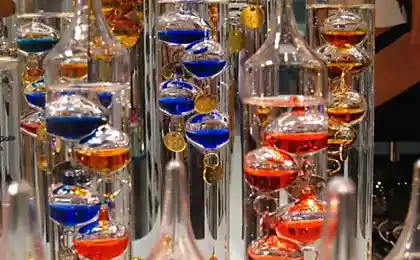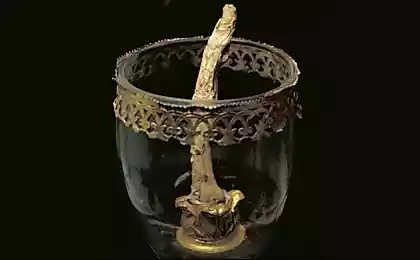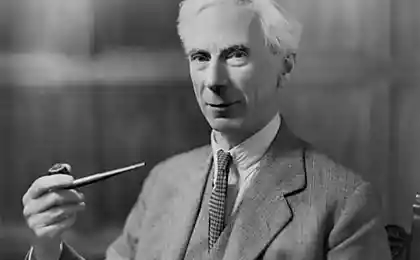2822
Thermometer Italian physicist Galileo Galilei
Thermometer named after the Italian physicist Galileo who first discovered that the density of the liquid changes as a result of the increase or decrease in temperature.
Thermometer is made of a sealed glass cylinder. Inside the clean liquid and several blisters, each of which has a slug.
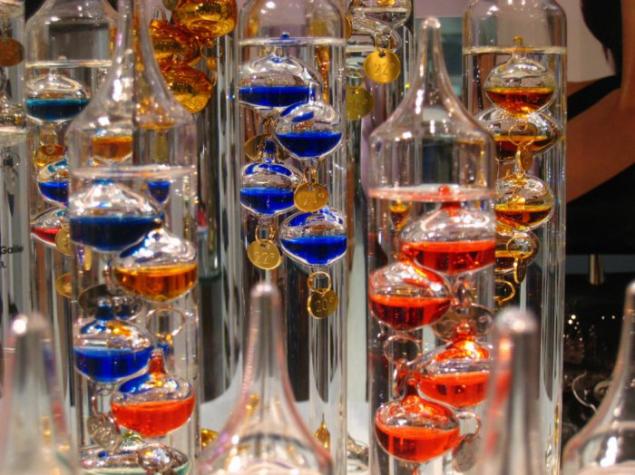
As the temperature changes, they rise and fall depending on the mathematical principles. Yet Galileo thermometer in addition there is the practical value and aesthetic - this in itself is a beautiful object.

Although Galileo did not create this thermometer, it was named in his honor, because without his discoveries thermometer would not exist. These devices are produced at the end of the 17th century.

Each bubble is attached plummet. At each symbol is engraved and number. This balances. Each of them is different from the other.

In bubbles dyed water was added to each bubble has the same density. But it gave her beauty bulb.

Mathematical principles are very simple thermometer. Each vial has a thermometer in the same volume, and hence the same density.
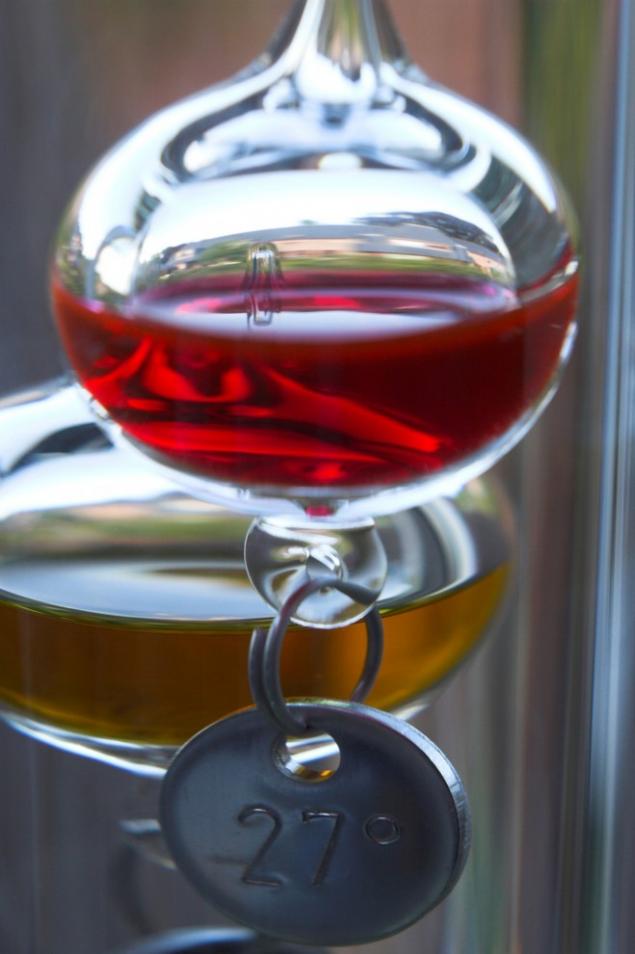
This means that each vial has the same magnitude of the gravitational force and buoyancy. Gravity (force of attraction) pushes down the buoyancy - up.
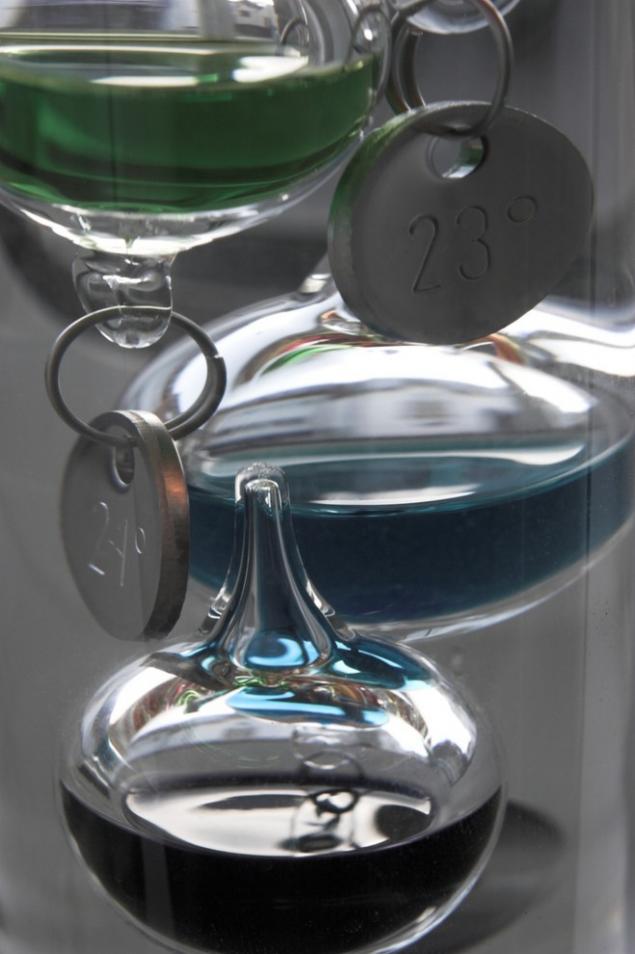
Each bubbles marked the weights attached to its base. This increases the relative weight plummet bladder, as well as the effect of its gravity. Weights means that the density of each bubble is a little different from the others.
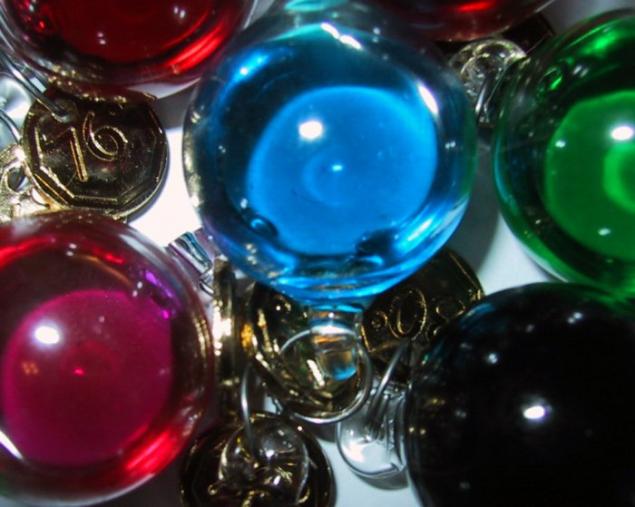
The ball, which is located at the very bottom, and displays the current temperature.
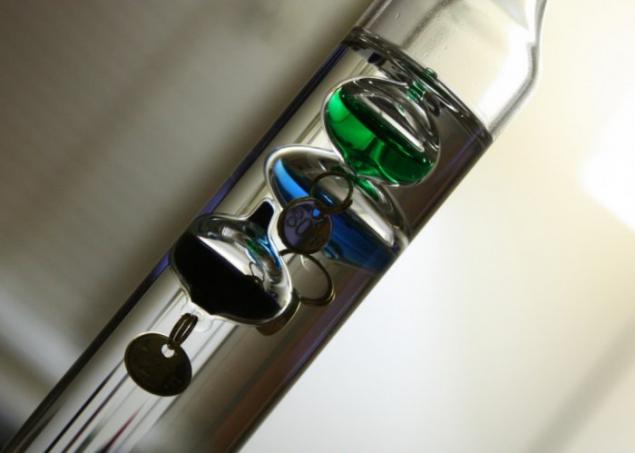
As soon as fluid density changes around the bubble, the ejection force exceeds the force of attraction, so is the bottom of the bubble. When the temperature increases, the density of the liquid also increases.
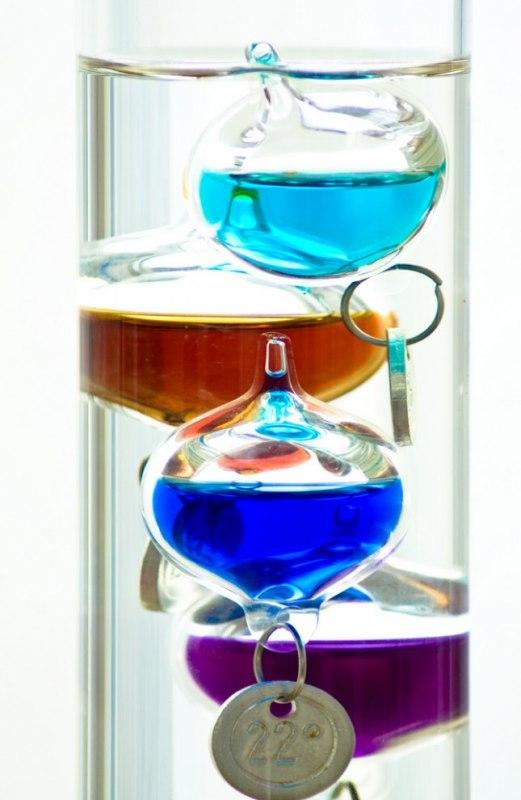
When the density is reduced, the buoyancy force also decreases. All bubbles are constant, so that when the temperature increases and the liquid, the buoyancy is reduced because of the proportional to the density of the liquid and the bubble goes to the bottom.
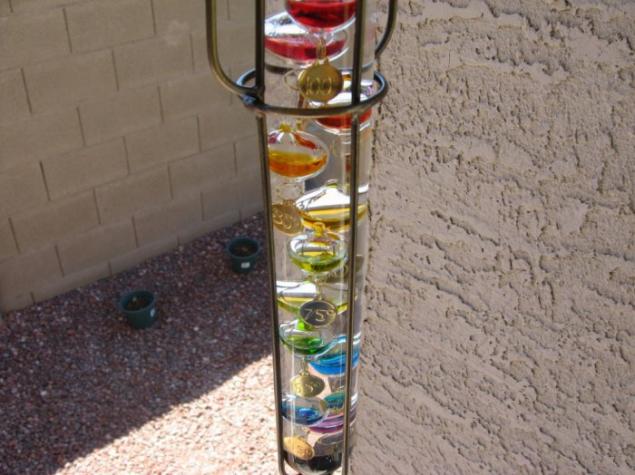
Same thing on the contrary, when the density of the water increases. Each bubble has a weight so that it will rise and fall in a certain density of the liquid at a certain temperature.
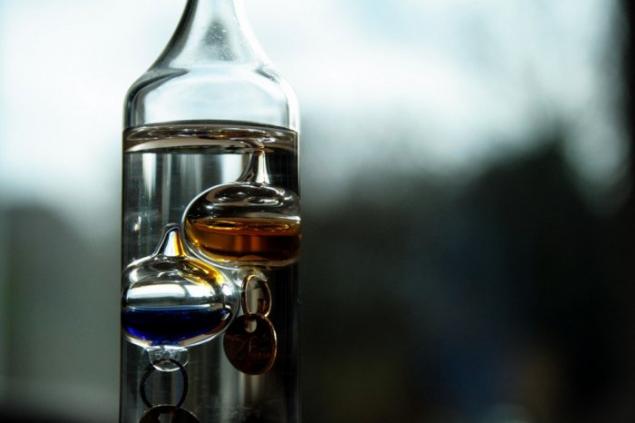
In terms of design thermometer is elegant and beautiful form. This is a real example of scientific beauty or beautiful science.
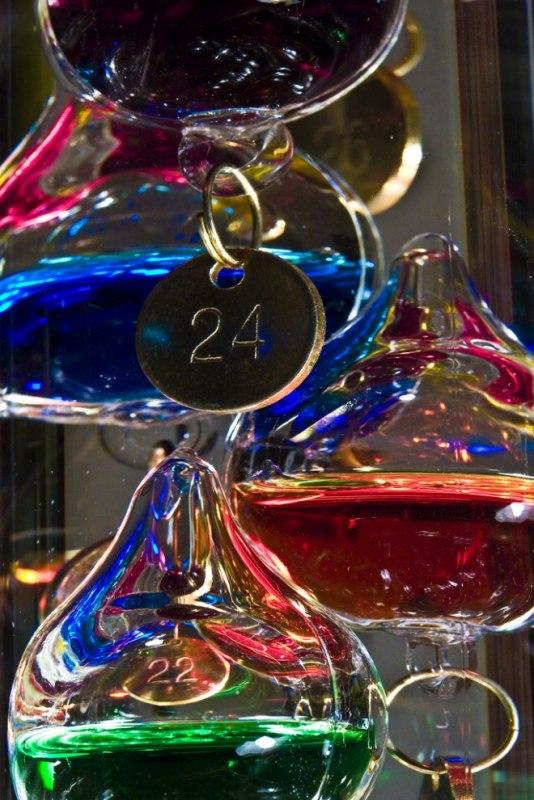
Thermometer is made of a sealed glass cylinder. Inside the clean liquid and several blisters, each of which has a slug.

As the temperature changes, they rise and fall depending on the mathematical principles. Yet Galileo thermometer in addition there is the practical value and aesthetic - this in itself is a beautiful object.

Although Galileo did not create this thermometer, it was named in his honor, because without his discoveries thermometer would not exist. These devices are produced at the end of the 17th century.

Each bubble is attached plummet. At each symbol is engraved and number. This balances. Each of them is different from the other.

In bubbles dyed water was added to each bubble has the same density. But it gave her beauty bulb.

Mathematical principles are very simple thermometer. Each vial has a thermometer in the same volume, and hence the same density.

This means that each vial has the same magnitude of the gravitational force and buoyancy. Gravity (force of attraction) pushes down the buoyancy - up.

Each bubbles marked the weights attached to its base. This increases the relative weight plummet bladder, as well as the effect of its gravity. Weights means that the density of each bubble is a little different from the others.

The ball, which is located at the very bottom, and displays the current temperature.

As soon as fluid density changes around the bubble, the ejection force exceeds the force of attraction, so is the bottom of the bubble. When the temperature increases, the density of the liquid also increases.

When the density is reduced, the buoyancy force also decreases. All bubbles are constant, so that when the temperature increases and the liquid, the buoyancy is reduced because of the proportional to the density of the liquid and the bubble goes to the bottom.

Same thing on the contrary, when the density of the water increases. Each bubble has a weight so that it will rise and fall in a certain density of the liquid at a certain temperature.

In terms of design thermometer is elegant and beautiful form. This is a real example of scientific beauty or beautiful science.



